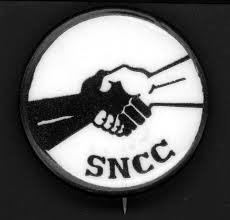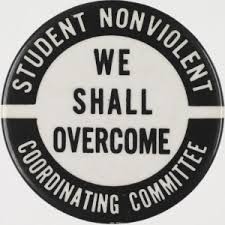Raleigh Student Nonviolent Coordinating Committee (SNCC) Historical Marker
Introduction
Text-to-speech Audio
Images
SNCC sticker

SNCC button

Backstory and Context
Text-to-speech Audio
On February 1, 1960, a sit-in took place in Greensboro, North Carolina. The sit-in involved four college students (the A&T Four) who devised a plan to go to a local store/diner and request service at the lunch counter. The story of the student protest spread and within weeks, there were similar demonstrations near universities throughout North Carolina. By the end of February 1960, a few business owners had integrated their stores.
SNCC helped coordinate efforts by civil rights leaders over the next decade. Some of the most influential civil rights leaders became active in SNCC, such as the future Congressman John Lewis and future NAACP chairman, Julian Bond. Future Washington DC mayor Marion Barry also got his political beginnings in the organization.
The Student Nonviolent Coordinating Committee also helped organize the Freedom Rides and demonstrations against the exclusion of African Americans at the polls. SNCC was also one of six civil rights organizations that planned the March on Washington with Dr. Martin Luther King, Jr.
Cite This Entry
Yates, David and Joan Adkins. "Raleigh Student Nonviolent Coordinating Committee (SNCC) Historical Marker." Clio: Your Guide to History. March 22, 2018. Accessed April 16, 2025. https://theclio.com/tour/575/17

